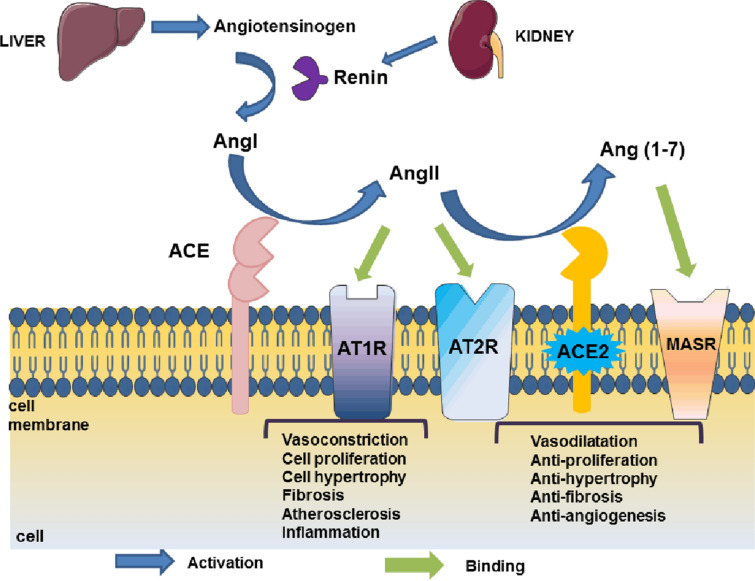Fig. 2.
Schematic overview of RAS and its biologic functions. Angiotensinogen is secreted by the liver and is converted to angiotensin I (AngI) via renin, a protease produced in the kidneys. AngI is subsequently converted to AngII by the catalytic action of angiotensin-converting enzyme (ACE), and binds to Angiotensin II Type 1 (AT1) and Type 2 (AT2) receptors. AngII binds to the angiotensin type 1 receptor (AT1R) to promote actions, such as vasoconstriction, cell hypertrophy, fibrosis, proliferation and inflammation. ACE2 converts Ang-I and Ang-II to angiotensin (1–7). Ang (1–7) binds to the MAS receptor (MASR) to promote actions of vasodilation, vascular protection, anti-fibrosis, anti-proliferation, anti-inflammation and anti-angiogenesis. This figure was created using Servier Medical Art templates, which are licensed under a Creative Commons Attribution 3.0 Unported License; https://smart.servier.com

